Over New Year's weekend in January 1959 I did a mullti-day car trip to what was then Death Valley National Monument. It has since been enlarged and designated as Death Valley National Park. I drove to Death Valley from San Diego and then drove to every identified site within the the valley. I also visited the ghost town of Ryolite which is outside the Park. The captions on the following pictures describe the trip.
This website provides a lot of information about Death Valley National Park.
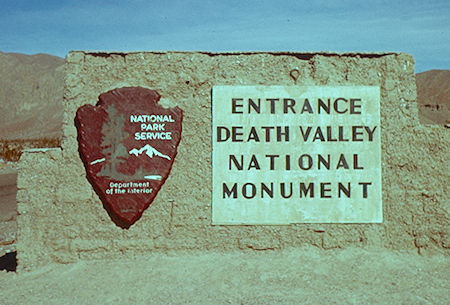
Death Valley entrance sign - Death Valley - Jan 1959
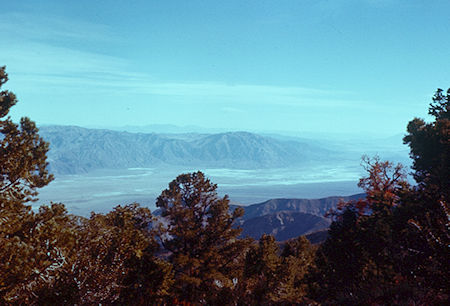
Panament Valley from Mahogany Flat - Death Valley - Jan 1959
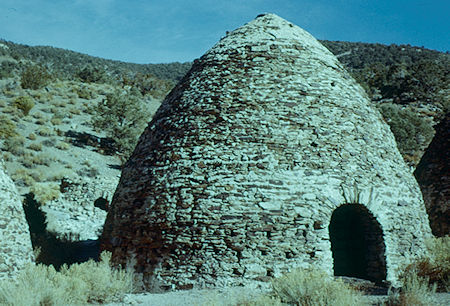
Charcoal Kilns in Wildrose Canyon - Death Valley - Jan 1959
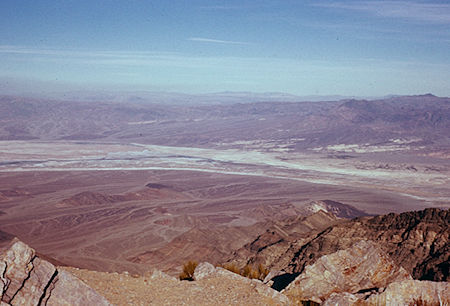
Death Valley from Aquereberry Point - Death Valley - Jan 1959
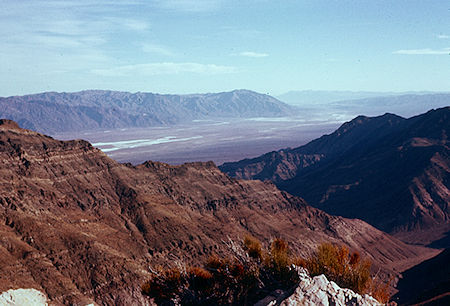
Panament Valley from Aquereberry Point - Death Valley - Jan 1959
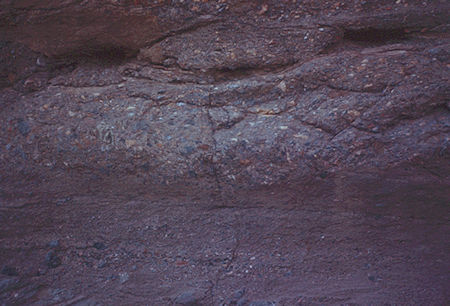
Mosaic Canyon - Death Valley - Jan 1959
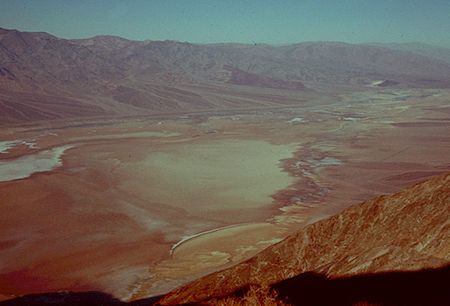
Dante's View - Death Valley - Jan 1959
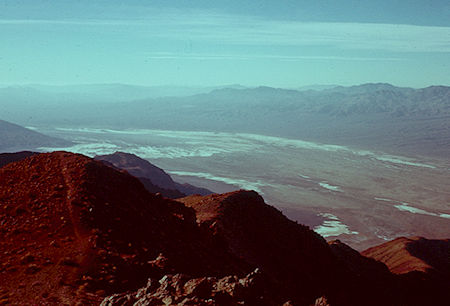
Dante's View - Death Valley - Jan 1959
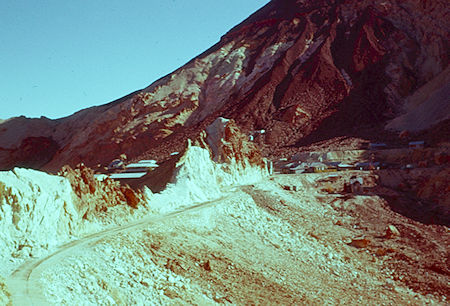
Ryan Ghost Town (borax mine 1914-1920's) - Death Valley - Jan 1959
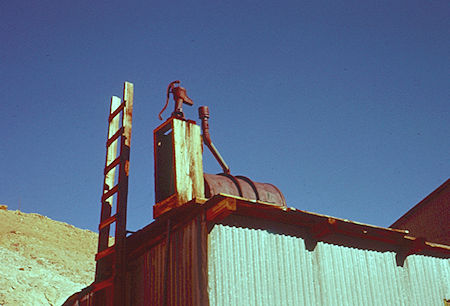
Water system at Ryan Ghost Town (borax mine 1914-1920's) - Death Valley - Jan 1959
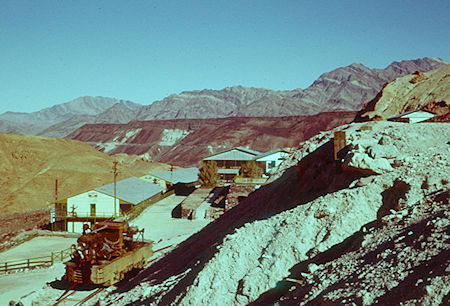
Ryan Ghost Town (borax mine 1914-1920's) - Death Valley - Jan 1959
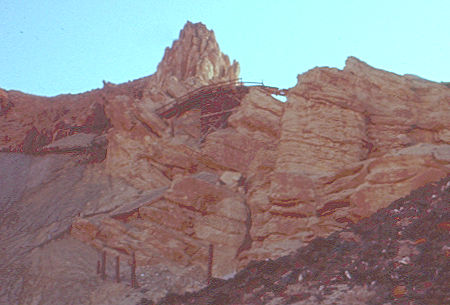
Old tram and track trestles at Ryan Ghost Town (borax mine 1914-1920's)
Death Valley - Jan 1959
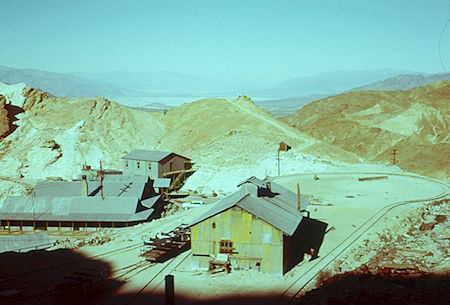
Ryan Ghost Town (borax mine 1914-1920's) - Death Valley - Jan 1959
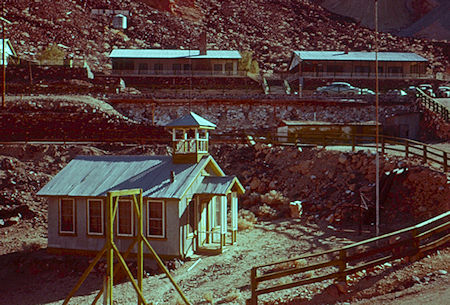
School at Ryan Ghost Town (borax mine 1914-1920's) - Death Valley - Jan 1959
More information on Ryan here and here with pictures and this Death Valley Conservancy website with pictures and here with pictures and maps.
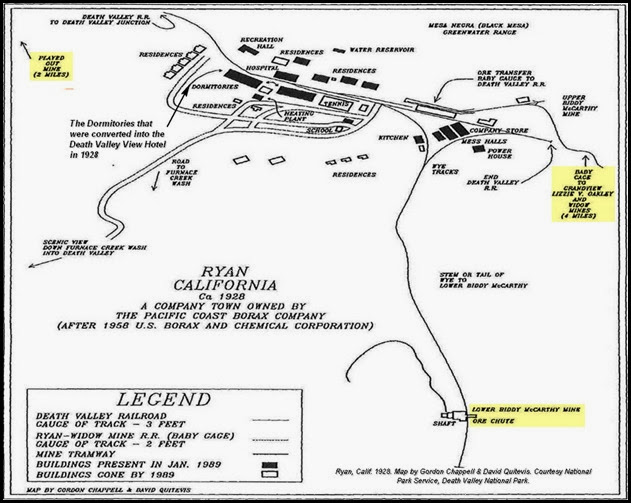
Ryan Map - National Park Service
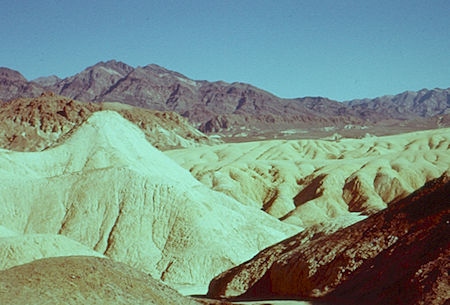
20 Mule Team Canyon - Death Valley - Jan 1959
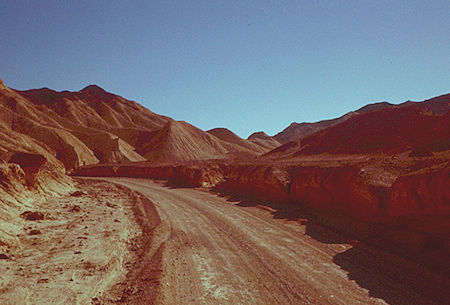
20 Mule Team Canyon - Death Valley - Jan 1959
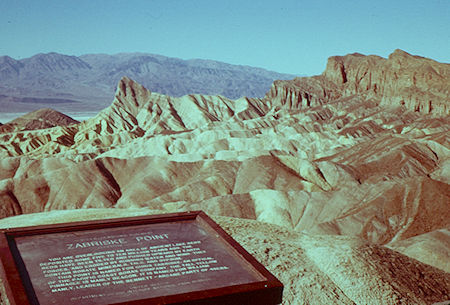
Zabriske Point - Death Valley - Jan 1959
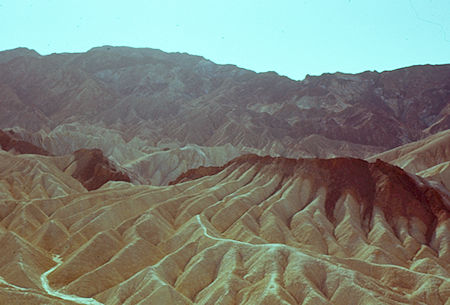
Zabriske Point - Death Valley - Jan 1959
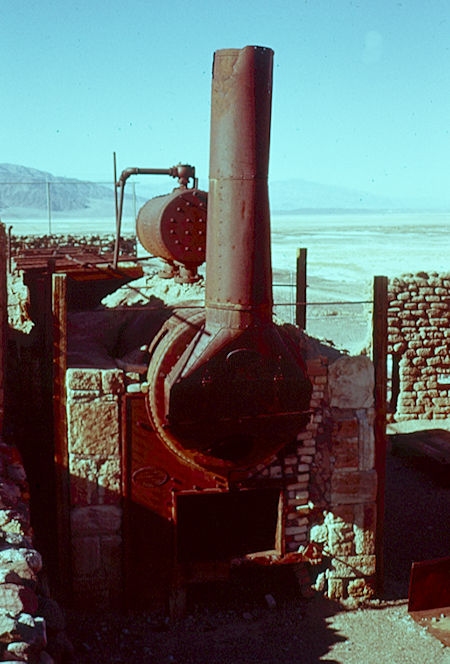
Harmony Borax Works - Death Valley - Jan 1959
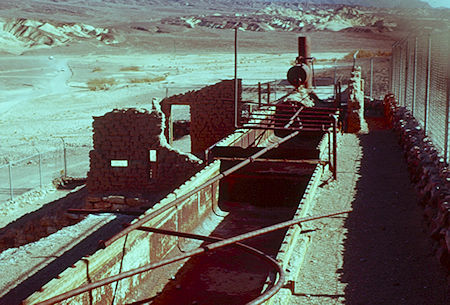
Harmony Borax Works - Death Valley - Jan 1959
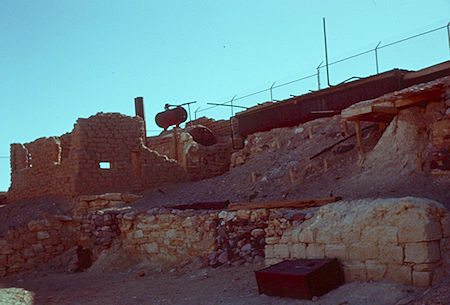
Harmony Borax Works - Death Valley - Jan 1959
More information on Harmony Borax Works here and here and here and here.
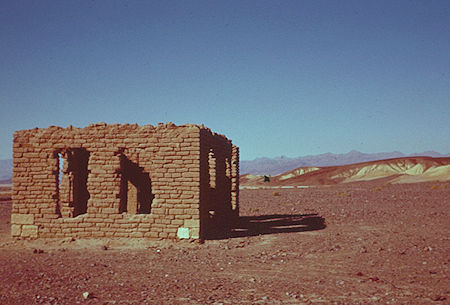
Ruins near Harmony Borax Works - Death Valley - Jan 1959
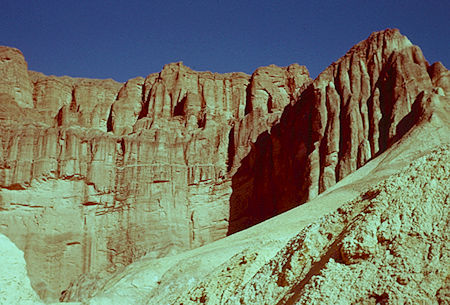
Golden Canyon - Death Valley - Jan 1959
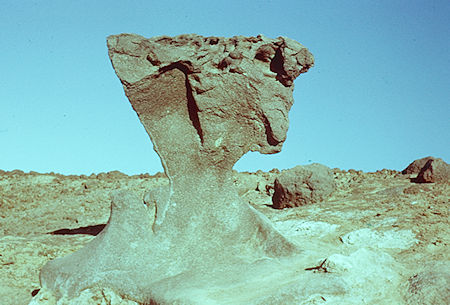
Mushroom Rock - Death Valley - Jan 1959
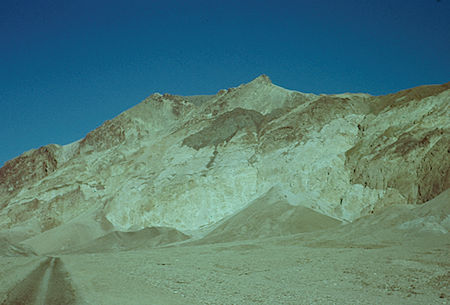
Artists Drive - Death Valley - Jan 1959
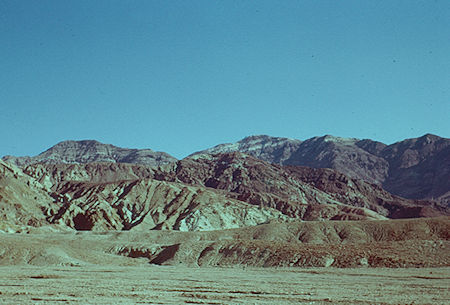
Artists Drive - Death Valley - Jan 1959
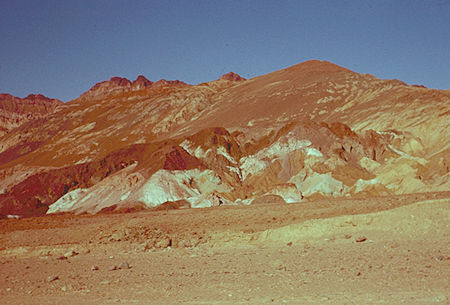
Artists Pallette - Death Valley - Jan 1959
More information and better pictures of Artists Pallette here.
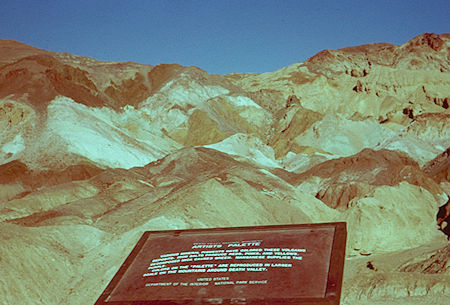
Artists Pallette - Death Valley - Jan 1959
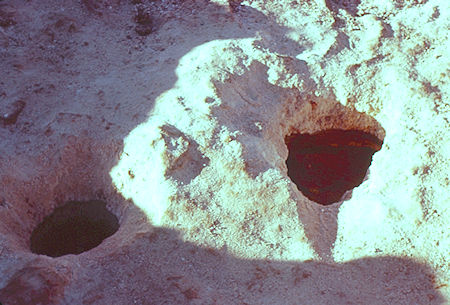
Salt Pool - Death Valley - Jan 1959
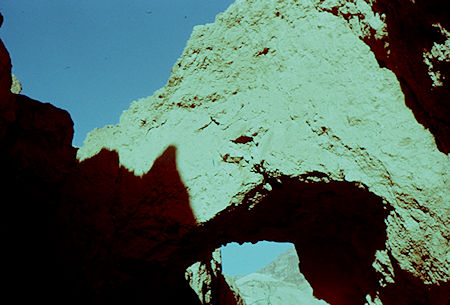
Natural Bridge - Death Valley - Jan 1959
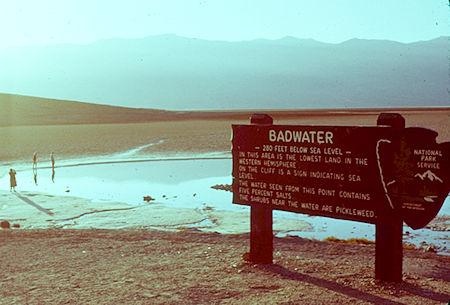
Badwater 278.8 feet below sealevel - Death Valley - Jan 1959
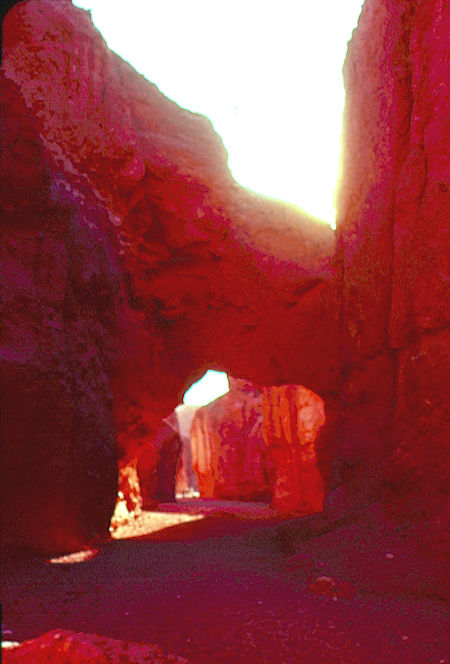
Natural Bridge - Death Valley - Jan 1959
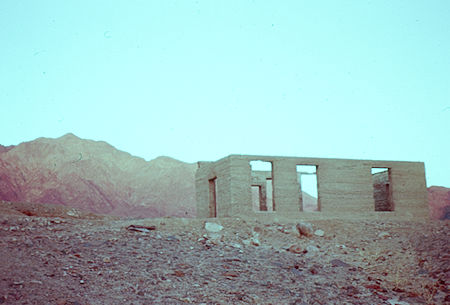
Ashford Mill ruins - Death Valley - Jan 1959
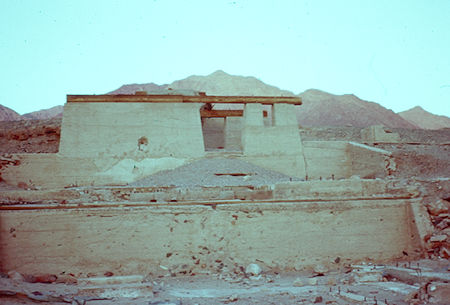
Ashford Mill ruins - Death Valley - Jan 1959
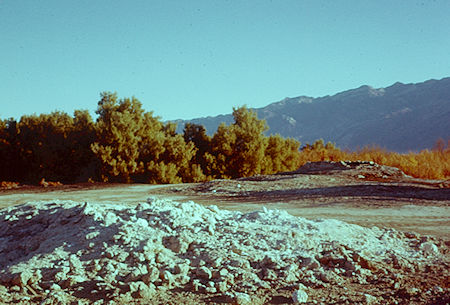
Eagle Borax Works - Death Valley - Jan 1959
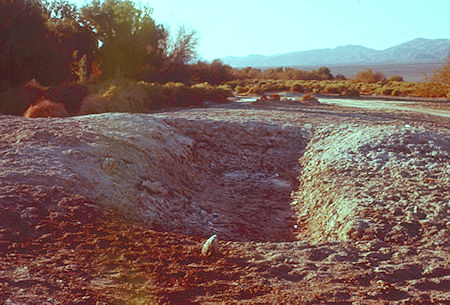
Eagle Borax Works - Death Valley - Jan 1959
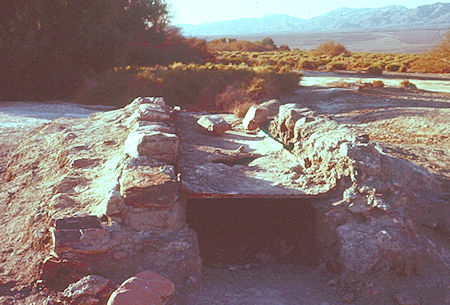
Eagle Borax Works - Death Valley - Jan 1959
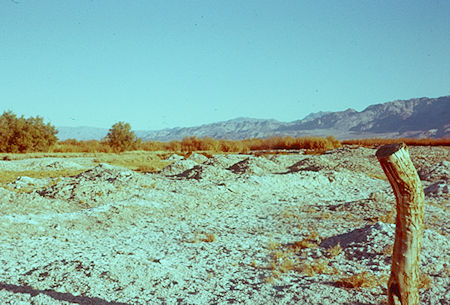
Borax material stacked near Eagle Borax Works - Death Valley - Jan 1959
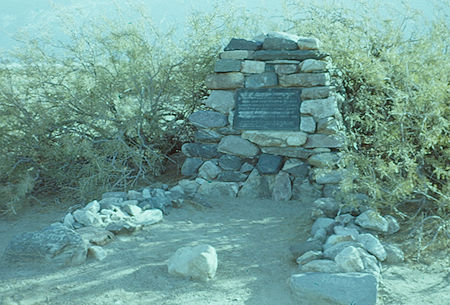
Jim Dayton and Shorty (Frank) Harris grave - Death Valley - Jan 1959
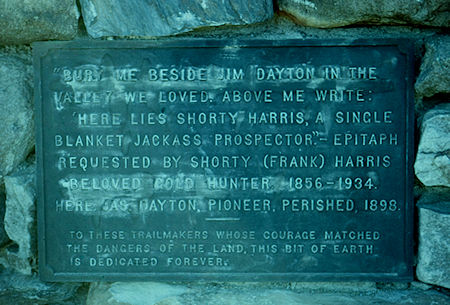
Jim Dayton and Shorty (Frank) Harris grave marker - Death Valley - Jan 1959
While on this Death Valley trip I visited the Rhyolite mining ghost town just outside of the park. Since then it has been designated as the Rhyolite Historic Area and the Bureau of Land Management (BLM) now actively manages the townsite which is mostly federal land with a few privately owned in-holdings.
Rhyolite is a ghost town in Nye County, Nevada in the Bullfrog Hills, about 120 miles northwest of Las Vegas, near the eastern edge of Death Valley. The town began in early 1905 as one of several mining camps that sprang up after a prospecting discovery in the surrounding hills.
By 1907, Rhyolite had electric lights, water mains, telephones, newspapers, a hospital, a school, an opera house, and a stock exchange. Published estimates of the town's peak population vary widely, but scholarly sources generally place it in a range between 3,500 and 5,000 in 1907–08.
Rhyolite declined almost as rapidly as it rose. After the richest ore was exhausted, production fell. By the end of 1910, the mine was operating at a loss, and it closed in 1911. By this time, many out-of-work miners had moved elsewhere, and Rhyolite's population dropped well below 1,000. By 1920, it was close to zero.
After 1920, Rhyolite and its ruins became a tourist attraction and a setting for motion pictures. Most of its buildings crumbled, were salvaged for building materials, or were moved to nearby Beatty or other towns, although the railway depot and a house made chiefly of empty bottles were repaired and preserved.
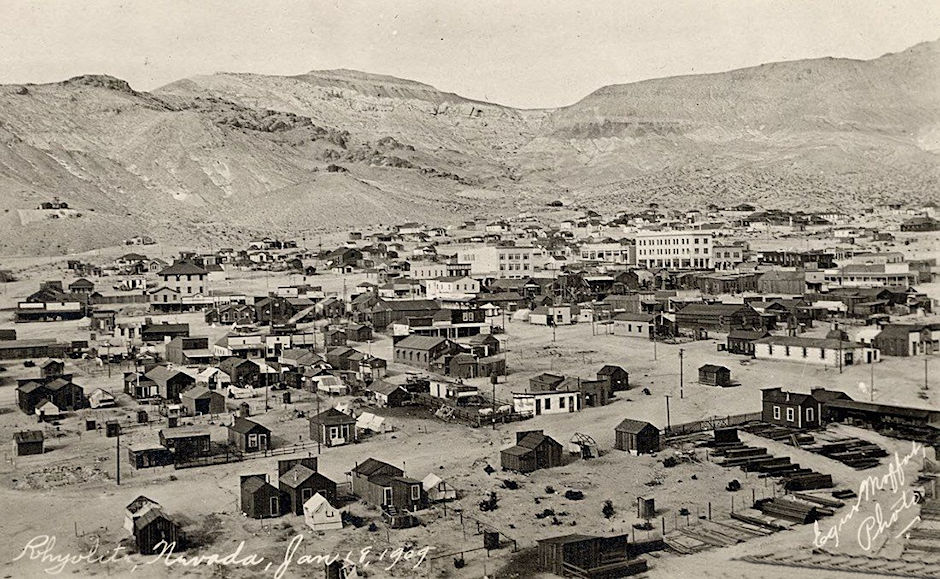
Rhyolite, January 18, 1909
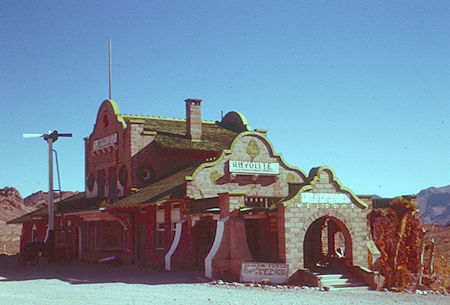
Las Vegas and Tonopah Railroad Station - Rhyolite - Jan 1959
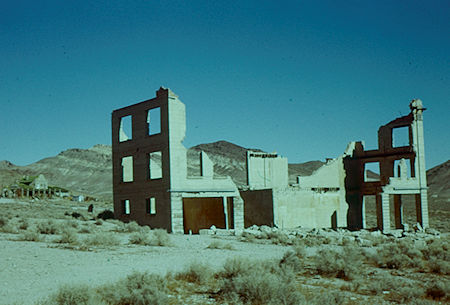
John S. Cook and Co. Bank Building - Rhyolite - Jan 1959
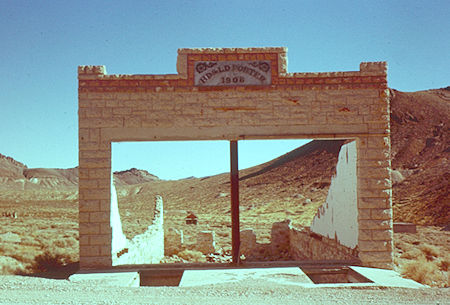
Porter Brothers Store - Rhyolite - Jan 1959
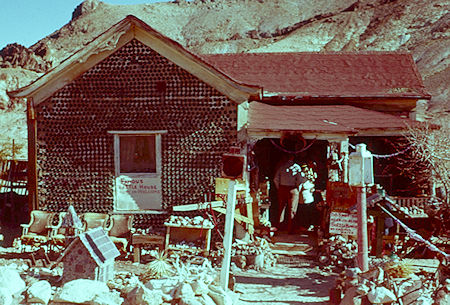
Tom Kelly Bottle House - Rhyolite - Jan 1959
Click for much more about Rhyolite
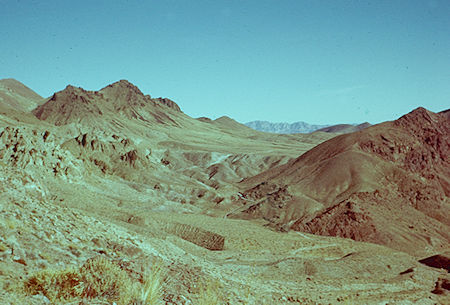
Looking back southeast from Red Pass - Death Valley - Jan 1959
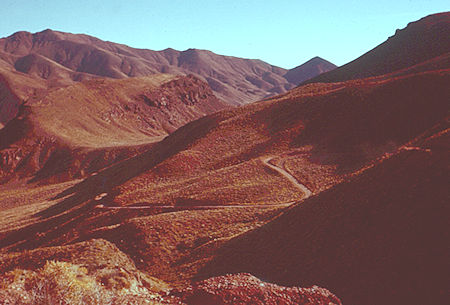
Looking back southeast from Red Pass - Death Valley - Jan 1959
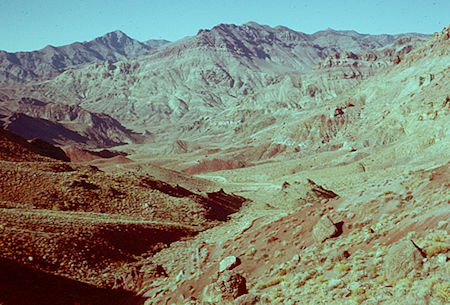
View northwest from Red Pass - Death Valley - Jan 1959
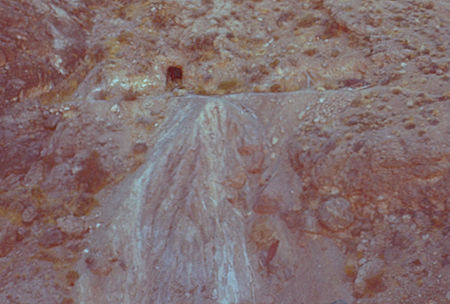
Mine near Leadfield - Death Valley - Jan 1959
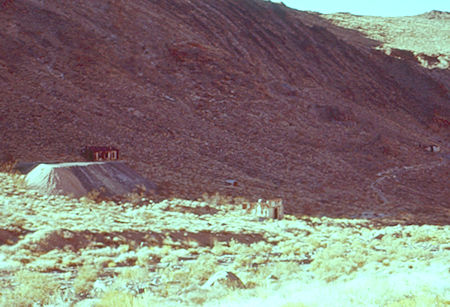
Leadfield, Titus Canyon - Death Valley - Jan 1959
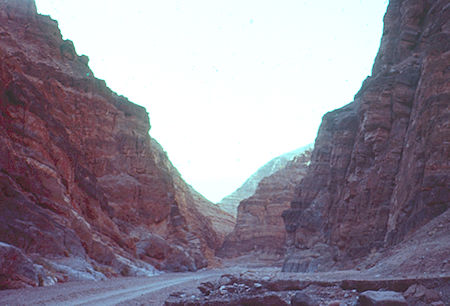
Titus Canyon - Death Valley - Jan 1959
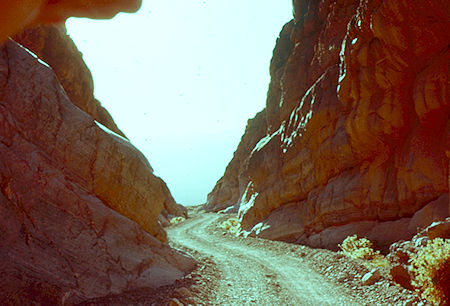
End of Titus Canyon - Death Valley - Jan 1959
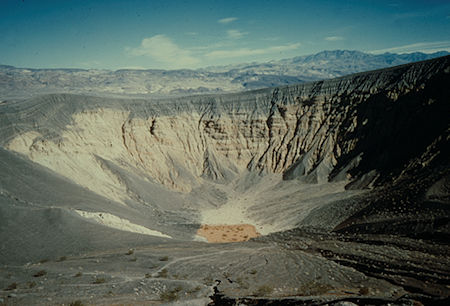
Ubehebe Crater - Death Valley - Jan 1959
On March 28-29, 1985, with Jim White, I visited The Race Track south of Ubehebe Crater.
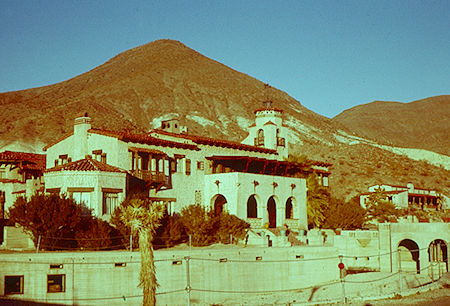
Scotty's Castle - Death Valley - Jan 1959
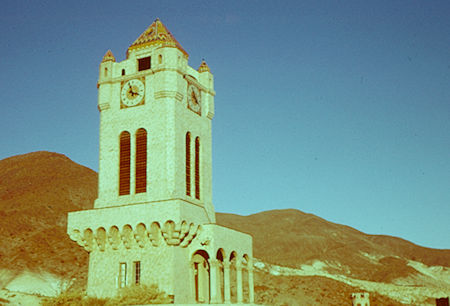
Clock Tower Scotty's Castle - Death Valley - Jan 1959
Scotty's Castle (also known as Death Valley Ranch) is a two-story Mission Revival and Spanish Colonial Revival style villa located in the Grapevine Mountains of northern Death Valley in Death Valley National Park, California. "Scotty's Castle" is named for gold prospector Walter E. Scott, although Scott never owned it, nor is it an actual castle.
The ranch is located about 45 miles north of Stovepipe Wells, California, via California State Route 190 to Scotty's Castle Road, or about a three-hour drive from Las Vegas, Nevada.
Construction began on Scotty's Castle in 1922, and cost between $1.5 and $2.5 million. Prospector, performer, and con man Walter Scott, born in Cynthiana, Kentucky, also known as "Death Valley Scotty," convinced Chicago millionaire Albert Mussey Johnson to invest in Scott's gold mine in the Death Valley area. Though initially angered when the mine turned out to be fraudulent, Johnson was fascinated with the colorful Scott and the two men struck up an unlikely friendship. By 1937, Johnson had acquired more than 1,500 acres in Grapevine Canyon, where the ranch is located.
After Johnson and his wife made several trips to the region, and his health improved, construction began. It was Mrs. Johnson's idea to build something comfortable for their vacations in the area, and the villa eventually became a winter home.
The Johnsons hired Martin de Dubovay as the architect, Mat Roy Thompson as the engineer and head of construction, and Charles Alexander MacNeilledge as the designer.
Unknown to the Johnsons, the initial survey was incorrect, and the land they built Death Valley Ranch on was actually government land; their land was farther up Grapevine Canyon. Construction halted as they resolved this mistake, but before it could resume, the stock market crashed in 1929, making it difficult for Johnson to finish construction. Having lost a considerable amount of money, the Johnsons used the Death Valley Ranch to produce income by letting rooms out, upon the suggestion of Scott.
The Johnsons died without heirs and had hoped that the National Park Service would purchase the property, and in 1970, the National Park Service purchased the villa for $850,000 from the Gospel Foundation (the socially-oriented charity Johnson founded in 1946), to which the Johnsons had left the property. Walter Scott, who was taken care of by the Gospel Foundation after Johnson's passing, died in 1954 and was buried on the hill overlooking Scotty's Castle next to a beloved dog.
Walter Scott, Death Valley Scotty, convinced everyone that he had built the castle with money from his rich secret mines in the area. Scotty was the mystery, the cowboy, and the entertainer, but he was also a friend. Albert was the brains and the money. Two men as different as night and day, from different worlds and with different visions - who shared a dream.
The U.S. National Park Service gives guided tours of Scotty's Castle for a nominal fee. Park rangers dress in 1930s style clothes to help take the visitor back in time. During the tour, guests are treated to the sounds of a 1,121 pipe Welte-Mignon Theatre Organ.
Click for much more about Scotty's Castle including pictures and organ music
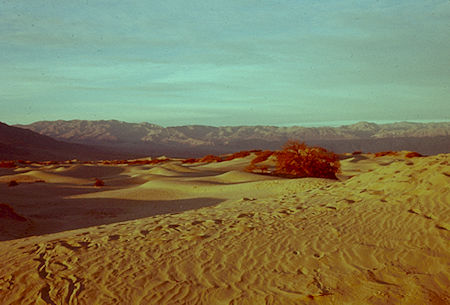
Sand Dunes near Stove Pipe Wells - Death Valley - Jan 1959
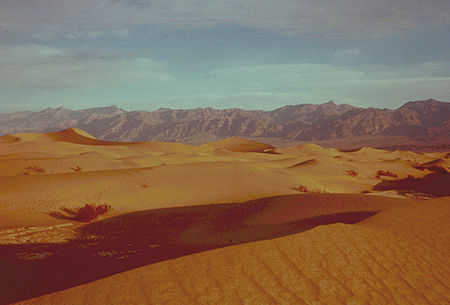
Sand Dunes near Stove Pipe Wells - Death Valley - Jan 1959
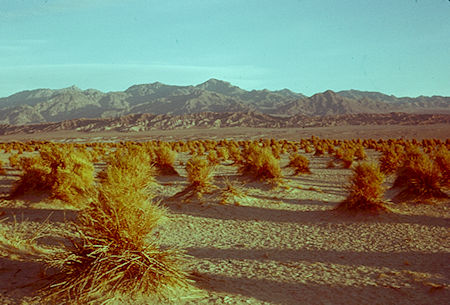
Devils Corn Field - Death Valley - Jan 1959
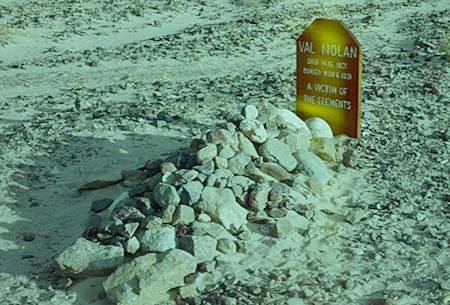
Val Nolan was a miner who was last seen in Beatty, Nevada shortly before he died. He died in the intense summer heat of Death Valley and was found by a movie crew three months later, who buried him where they found him. His grave is off the dirt road going to the sand dunes near Stovepipe Wells - Death Valley - Jan 1959
The Borax Museum illustrates Death Valley's connection to borax mining, and presents pioneer-era mining and transportation equipment, including 'Twenty Mule Team' wagons.
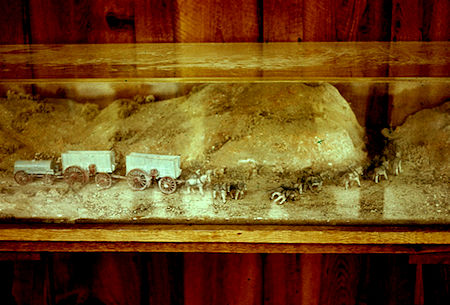
20 Mule Team model - Borax Museum - Death Valley - Jan 1959
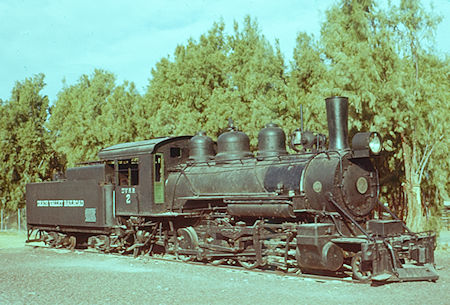
Railroad engine - Borax Museum - Death Valley - Jan 1959
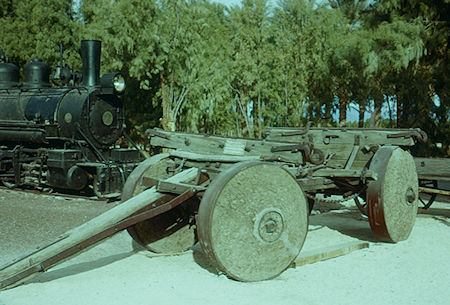
Timber Wagon - Borax Museum - Death Valley - Jan 1959
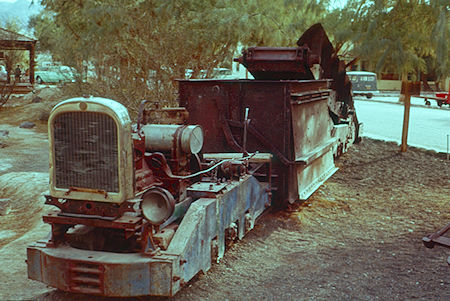
Mine machinery - Borax Museum - Death Valley - Jan 1959
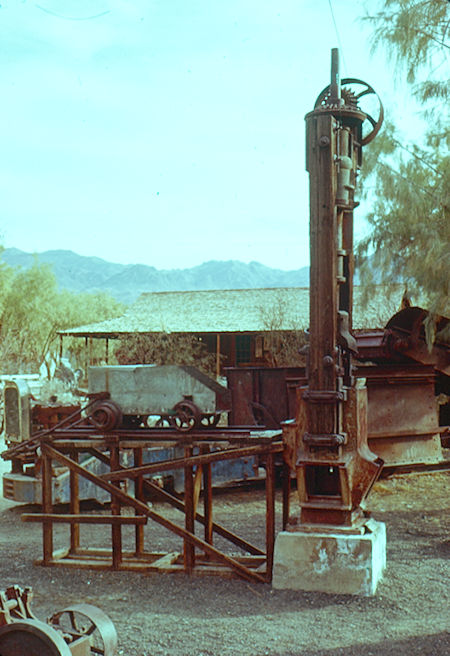
Stamp Mill - Borax Museum - Death Valley - Jan 1959
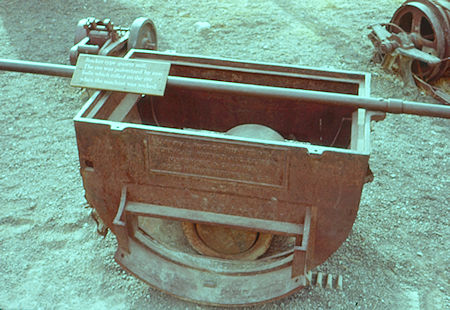
Rocker Mill - Borax Museum - Death Valley - Jan 1959
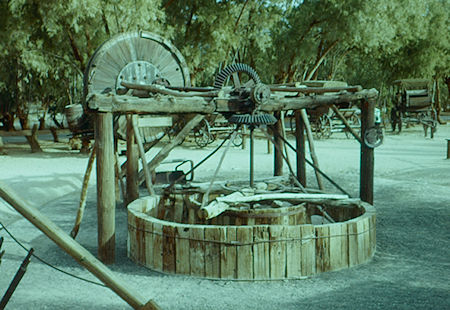
Water powered ore crusher - Borax Museum - Death Valley - Jan 1959
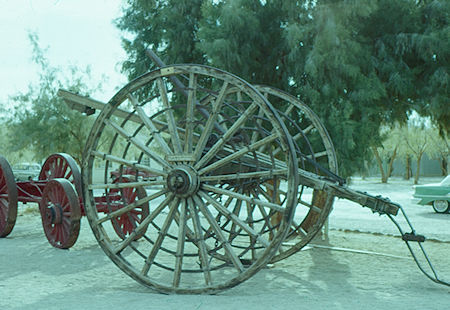
Logging wheels - Borax Museum - Death Valley - Jan 1959
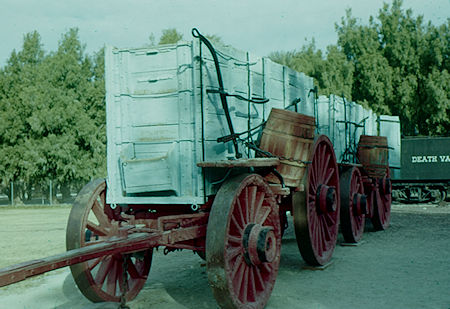
20 Mule-Team Wagon - Borax Museum - Death Valley - Jan 1959
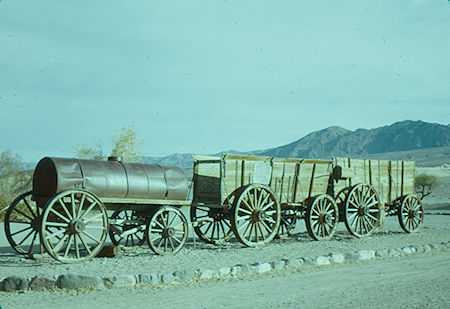
20 Mule-Team wagon and water wagon - Furnace Creek Ranch - Death Valley - Jan 1959
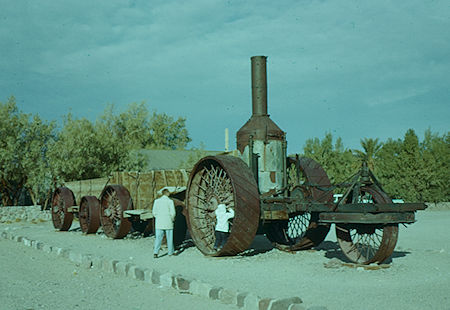
Steam powered Borax hauling rig - Furnace Creek Ranch - Death Valley - Jan 1959
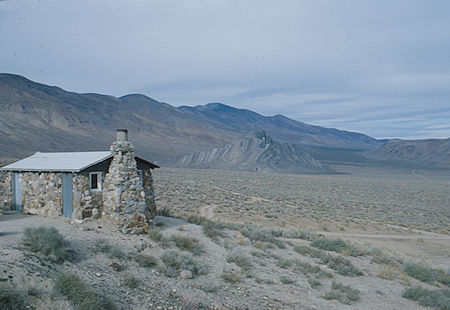
Anvil Spring and Striped Butte, Butte Valley - Death Valley - Jan 1978
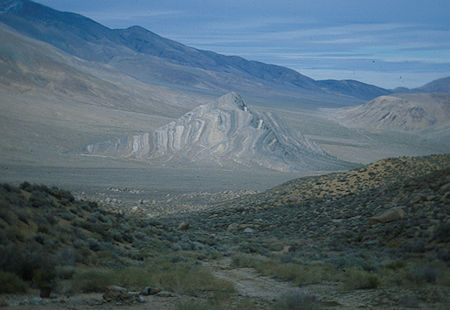
Striped Butte, Butte Valley - Death Valley - Jan 1978